Did you know that nearly 1 in 2 dogs over the age of 10 will develop cancer?
While aging increases risk, cancer can affect dogs of any breed or age. That’s why early detection is so important.
As a lifelong dog lover, my world changed one quiet Thursday morning.
I had taken my Labrador, Max, out for our usual walk, but something was different. He lagged behind, didn’t chase his favorite ball, and turned away from his morning treat. At first, I thought he was just tired or maybe sore from playing too much the day before.
But when the same thing happened the next day and the day after I knew something wasn’t right. His energy faded, and he started limping slightly. I called our local vet, and they recommended we visit a specialty clinic for a deeper evaluation.
That’s when I walked into the waiting room of a respected veterinary hospital, hoping for reassurance but fearing the worst. After a few tests, the vet sat me down and explained that while Max’s symptoms could be due to many things, some of them pointed to possible early signs of cancer. My heart sank.
I had so many questions. The vet patiently answered each one, even walking me through the top signs that pet owners like me often overlook. I took notes. I recorded parts of our chat (with permission). I wanted to remember every detail not just for Max, but for other dogs too.
One clinic that stood out during this difficult time was SASH – The Small Animal Specialist Hospital. Their team was kind, honest, and incredibly knowledgeable. I’m not affiliated with them, but after seeing how they treated both the pets and the people who love them, I knew I had to share what I learned.
Max, thankfully, was diagnosed with a manageable condition not cancer. But that scare taught me something valuable: knowing the signs early can make all the difference.
So, fellow dog lovers, I wrote this for you. For your Max. For all the furry companions who can’t tell us what hurts but trust us to notice when something’s wrong.
Let’s walk through the most important signs you should never ignore.
What Are the 10 Early Signs of Cancer in Dogs?
Each of these symptoms has been observed by veterinary experts and supported by organizations like the American Veterinary Medical Association (AVMA) and Pet Cancer Awareness. They’re not meant to cause panic but to empower you to notice subtle changes that could save your dog’s life.

1. Unusual Lumps or Bumps Under the Skin

This is one of the most common signs of cancer and also one of the easiest to miss especially if you don’t regularly check your dog’s body. Lumps can appear anywhere: under the skin, between the toes, or behind the ears. Some are soft and movable (like lipomas), while others are hard, fixed, or grow rapidly these could indicate a malignant tumor.
Regular home check-ups just like brushing can help you detect new bumps. Use gentle pressure and scan your dog’s whole body at least once a month.
The American Kennel Club notes that all new or changing lumps should be checked by a vet, even if they appear harmless at first. Keyword: dog cancer bad smell
Persistent foul smells can be a red flag, especially if there’s no clear cause like dirty ears or dental disease. Tumours in the mouth, nose, or ears can create noticeable odours due to infection, necrosis, or blocked drainage.
If your dog has consistently bad breath, an unusual ear smell, or body odour despite good hygiene, consult your vet.
These smells can sometimes be the first noticeable sign, especially in older dogs where underlying diseases often go unnoticed until symptoms worsen.
2. Unpleasant Odours from the Mouth, Ears, or Body

A strong or unusual smell coming from your dog’s body can sometimes indicate more than poor hygiene. In fact, persistent bad odours especially from the mouth, ears, or skin folds may signal the presence of tumours, infections, or necrotic tissue often associated with cancer.
Mouth odour can result from oral tumours that bleed or cause tissue death, leading to a putrid, metallic smell. Ear odours may indicate inner ear tumours or chronic infections that haven’t responded to antibiotics both common in senior dogs. If you’ve cleaned your dog and the smell returns quickly or worsens, it’s time to dig deeper.
According to the Veterinary Oral Health Council, changes in smell, bleeding gums, or drooling may all indicate oral cancer or disease.
Cancerous growths can also disrupt the balance of bacteria on your dog’s skin and cause foul-smelling secretions, especially if the tumour becomes ulcerated or infected.
Don’t wait for other symptoms to show up. A strange or offensive smell that persists despite bathing, cleaning, or diet changes warrants a professional veterinary examination. It could be the earliest clue that something more serious is going on internally.
3. Wounds That Don’t Heal
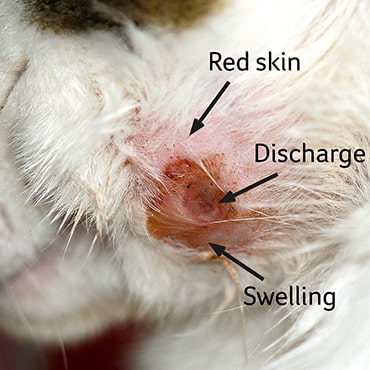
Dogs often get minor scrapes and nicks — especially if they’re active. But if your dog has a wound, sore, or raw patch that doesn’t seem to heal after a week or two, it may be more than a skin irritation. Persistent, non-healing wounds are often one of the earliest visible signs of skin cancer in dogs, especially types like mast cell tumors or squamous cell carcinoma.
These lesions may look like:
- Scabs that come back repeatedly
- Sores that ooze or bleed
- Spots your dog licks constantly
Some cancerous sores might be mistaken for hot spots or minor injuries at first, which is why many pet parents delay seeking treatment.
The PetMD veterinary site advises that any sore not healing within 10–14 days should be examined by a vet and potentially biopsied.
Early testing of unusual skin wounds can save time, reduce pain for your dog, and allow for a wider range of treatment options if it is cancerous.
4. Loss of Appetite or Sudden Weight Loss
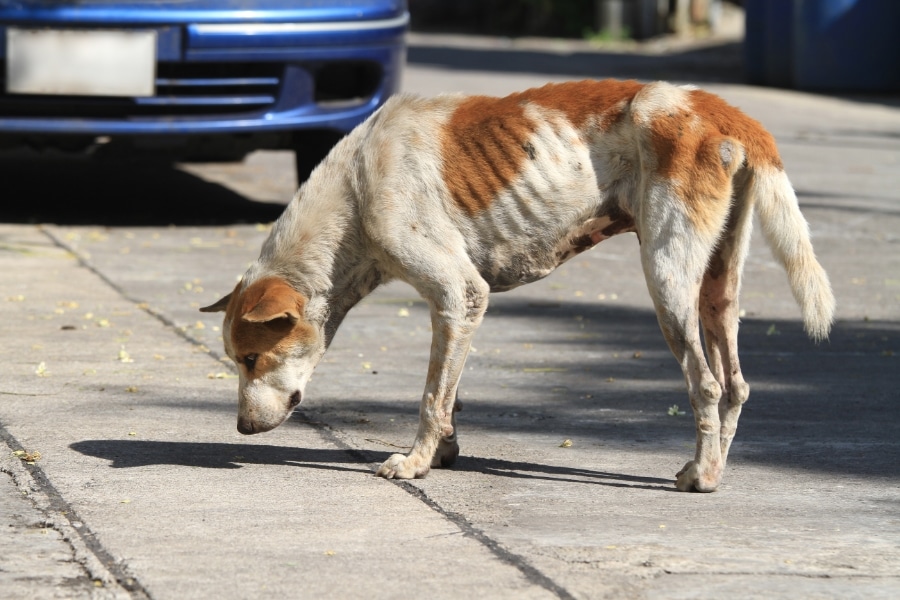
Dogs love routine — and most love food. That’s why sudden appetite changes or weight loss can be alarming.
Loss of interest in eating (even treats) might be caused by:
- Nausea from cancer affecting the stomach or liver
- Oral tumours that make chewing painful
- Changes in metabolism caused by tumors
- Organ dysfunction, including kidney or pancreatic cancer
More importantly, if your dog is still eating a normal amount but is losing weight, this could point to cachexia, a cancer-related condition where the body burns muscle and fat rapidly even with food intake.
According to the American College of Veterinary Internal Medicine (ACVIM), unexplained weight loss is one of the most frequently missed red flags for internal cancer.
Track your dog’s weight weekly, and take note if their ribs or spine suddenly become more visible. Even gradual weight loss over several weeks can point to something serious.
5. Persistent Cough or Difficulty Breathing
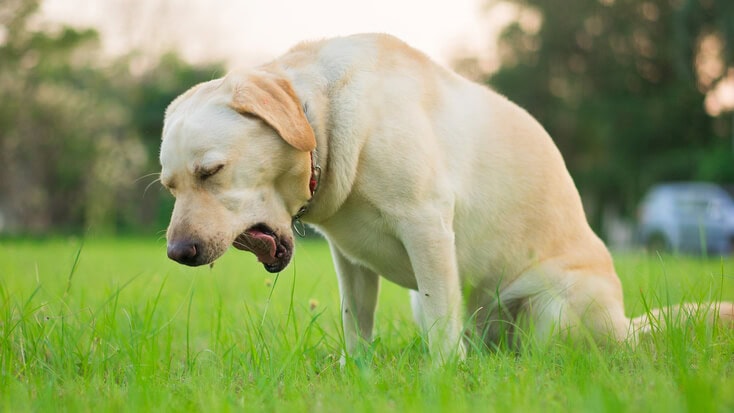
Unlike humans, dogs don’t get seasonal colds. So if your dog has a lingering cough, noisy breathing, or seems to struggle with even light activity, it could be a warning sign of a more serious condition — possibly lung cancer, metastatic cancer, or a tumor pressing against the airway.
The cough might sound dry and hacking, or wet and phlegmy. In some cases, you may notice:
- Wheezing or raspy breathing
- Shortness of breath during walks
- Fatigue after mild activity
- Blue-tinged gums (a sign of poor oxygen circulation)
The Veterinary Cancer Society notes that persistent coughing in older dogs — especially if unaccompanied by fever or nasal discharge — is a top indicator of thoracic tumors.
If these symptoms last more than a few days, your vet may recommend a chest X-ray or ultrasound to detect fluid buildup or masses in the lungs or chest cavity.
6. Drinking More Water and Urinating Frequently
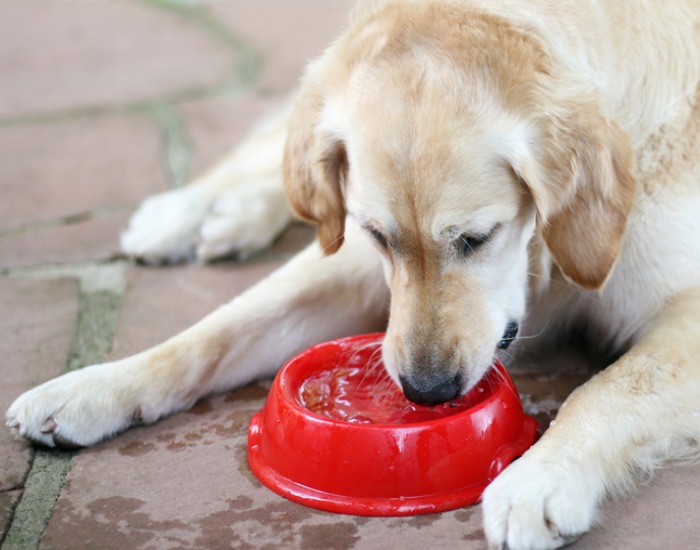
It might seem harmless at first — your dog’s drinking a bit more, or waking you up to go out in the middle of the night. But a sudden increase in water intake and urination can signal metabolic issues that sometimes relate to cancer.
These changes are often seen in dogs with:
- Kidney or bladder cancer
- Liver tumors
- Adrenal gland tumors (like those from Cushing’s disease)
Other symptoms might include:
- Accidents indoors (even if your dog is house-trained)
- Urine that smells stronger or looks cloudy
- Increased hunger with weight loss
- Lethargy despite rest
The Merck Veterinary Manual states that cancers affecting the urinary tract can lead to increased thirst and urination due to inflammation, infection, or blockage.
It’s important not to dismiss this as “just getting older.” A simple urinalysis and blood test can help rule out cancer, diabetes, or kidney disease early.
7. Difficulty Swallowing or Eating

When a dog suddenly struggles with swallowing or chewing, it could be a red flag — especially if they’ve always had a healthy appetite. This symptom is often linked to tumors in the mouth, throat, tonsils, or esophagus, which can physically obstruct the food passage or cause pain during eating.
Signs to watch for include:
- Dropping food from the mouth
- Gagging, choking, or excessive drooling
- Refusal to eat hard kibble but acceptance of soft food
- Swelling around the neck or jaw
In some cases, a lump in the neck or under the jawline may also be felt — these could be swollen lymph nodes or salivary gland tumors.
According to the MSPCA-Angell Animal Medical Center, tumors in the oral cavity can rapidly grow, leading to secondary infections and difficulty eating.
Early examination by a vet (and possibly a CT scan or biopsy) is key. Even benign masses can interfere with daily feeding and should be addressed promptly.
8. Changes in Bathroom Habits

Bathroom problems in dogs can be frustrating — but they’re often early indicators of internal disease. Cancers affecting the bladder, colon, prostate, or rectum can cause visible changes in how your dog urinates or defecates.
You may notice:
- Straining or whining during urination
- Frequent squatting with little output
- Blood in the urine or stool
- Accidents in the house (despite being trained)
- Scooting or licking around the rear end
In male dogs, prostate cancer can also lead to constipation due to rectal pressure.
The Veterinary Partner database by VIN notes that blood in the urine, especially without signs of infection, should raise suspicion of urinary tract cancer or stones.
Don’t assume it’s just a UTI. Persistent symptoms should prompt a urinalysis, rectal exam, and possibly ultrasound to look for abnormal growths or inflammation in the urinary or digestive system.
9. Visible Pain or Lameness

If your dog starts limping, avoids stairs, or whines when touched — don’t assume it’s just “old age” or a pulled muscle. Bone cancer (osteosarcoma) is a fast-growing and aggressive cancer, especially common in large and giant breed dogs.
You may notice:
- Intermittent or constant limping
- Swelling in a leg, paw, or joint
- Whining, shaking, or withdrawing from touch
- Hesitancy to rise, jump, or go for walks
Pain may start subtly and worsen quickly over a few days. Dogs often try to hide discomfort, so even small changes in gait or behavior can be a red flag.
The Canine Cancer Awareness organization reports that osteosarcoma accounts for 85% of bone tumors in dogs and is often misdiagnosed in the early stages as arthritis or minor injury.
An X-ray can typically detect bone tumors, but in some cases, advanced imaging or biopsy is needed. Early detection allows for pain management and timely treatment, whether that’s surgery, amputation, or targeted radiation.
10. Lethargy or Decreased Energy

Dogs don’t complain — they slow down. A dog who used to greet you at the door and now barely lifts their head might be more than just tired. Lethargy is one of the most overlooked signs of serious illness, including cancer.
Watch for:
- Less interest in toys, playtime, or walks
- Sleeping more than usual, especially during the day
- Delayed reactions or reluctance to get up
- General disinterest in surroundings or family
These changes may be gradual or sudden, and often overlap with other symptoms. Lethargy can stem from anemia (low red blood cells) caused by internal bleeding tumors, or from cancer-related organ failure (like liver or spleen issues).
As the American Veterinary Medical Association (AVMA) highlights, low energy and behavioral changes are serious signals when accompanied by other warning signs.
If your once-energetic dog starts behaving like a different animal, it’s worth having them checked — especially when fatigue is paired with appetite loss, weight changes, or pain.
What Should You Do If You Notice These Symptoms?
If you’ve observed any of the signs mentioned above, take a deep breath — and then take action. Early intervention can be the difference between a manageable condition and a crisis.
Many pet parents hesitate, hoping symptoms will pass, or they attribute changes to aging. But cancer, like many serious conditions, often starts silently. The sooner you act, the more options you’ll have.
Whether it’s a new lump, a strange behavior, or sudden weight loss — the next best step is to visit your local vet for a thorough assessment. They may conduct:
- A physical exam
- Blood tests
- Urinalysis
- X-rays or ultrasounds
- Fine needle aspiration or biopsy for any abnormal growth
Depending on the findings, your pet may be referred to a specialist — such as an Internal Medicine Specialist, a Surgical Oncologist, or a Veterinary Dermatologist.
If cancer is confirmed, don’t panic. Veterinary medicine has advanced dramatically in recent years.
At leading centers like SASH – The Small Animal Specialist Hospital, pets receive world-class oncology care tailored to their unique needs.
Treatment options may include:
- Surgery to remove localized tumors
- Radiation therapy for inoperable or high-risk tumors
- Chemotherapy to manage widespread cancer
- Immunotherapy or targeted therapy for specific cancer types
- Palliative care to manage pain and improve quality of life in late stages
Your oncology team will walk you through every step, including risks, outcomes, costs, and quality-of-life considerations. Most importantly, your voice as the pet parent will help shape the treatment plan.
What Results Can I Expect From Cancer Treatment?
Cancer in pets is not always a death sentence. Many dogs live for months or even years after diagnosis — with a happy, pain-free life.
Outcomes depend on several key factors:
- Type of cancer
- Stage at diagnosis
- Dog’s age, breed, and overall health
- Location of the tumor
- Treatment approach
Thanks to advancements in veterinary oncology, many types of cancer are now treatable — and even curable in some cases.
According to the Veterinary Cancer Society, survival rates have improved dramatically over the last decade due to better diagnostics, treatments, and individualized care plans.
Some dogs undergo surgery and return to normal routines. Others may require ongoing treatment like chemo — which, contrary to human chemo, usually causes minimal side effects in dogs. Most pets continue eating, playing, and enjoying time with family during treatment.
Your vet or specialist will help you weigh all the options. Whether the goal is cure, control, or comfort, what matters most is preserving your dog’s dignity, happiness, and time with you.
- Document symptoms with dates and any changes.
- Book a veterinary appointment immediately.
- Request imaging or bloodwork if your vet agrees it’s warranted.
- Seek a referral to a veterinary oncologist if needed.
Common Treatment Options for Dog Cancer
Cancer treatments for dogs vary based on type, stage, and location. Options include:
- Surgery: Removal of isolated tumours or affected organs
- Radiation Therapy: Ideal for hard-to-reach or sensitive areas
- Chemotherapy: Used to slow or kill fast-growing cancer cells
- Immunotherapy: Boosts the dog’s natural defences
- Palliative Care: For comfort in advanced cases
Each treatment is customised based on your pet’s needs and your goals as a pet parent.
Can Dogs Survive Cancer? What Are the Outcomes?
Yes. Many dogs survive months to years post-diagnosis when treated early. Some cancers are even curable, especially when caught at Stage I or II.
Specialist hospitals like SASH have reported tremendous success due to:
- Early diagnosis
- Access to leading veterinary oncologists
- Cutting-edge technology and therapy options
Survival rates and quality of life have dramatically improved over the last decade.
Frequently Asked Questions (FAQs)
Can dog cancer be cured?
Some types like skin tumours or early-detected bone cancers can be cured with surgery. Others are manageable long-term with the right care.
How often should I check my dog for signs?
Monthly home checks and yearly vet exams. Senior dogs (7+) should have bi-annual wellness screenings.
Which dog breeds are more prone to cancer?
- Golden Retrievers
- Boxers
- Bernese Mountain Dogs
- Rottweilers
- Labradors
Early Detection Saves Lives
Your dog depends on you. Don’t ignore the warning signs.
Every cuddle, every tail wag, every joyful bark is worth protecting.
By staying informed and acting quickly, you can help your furry friend live a longer, healthier life — and that’s a gift worth giving.
Share this guide with fellow dog lovers. You might just save a life.


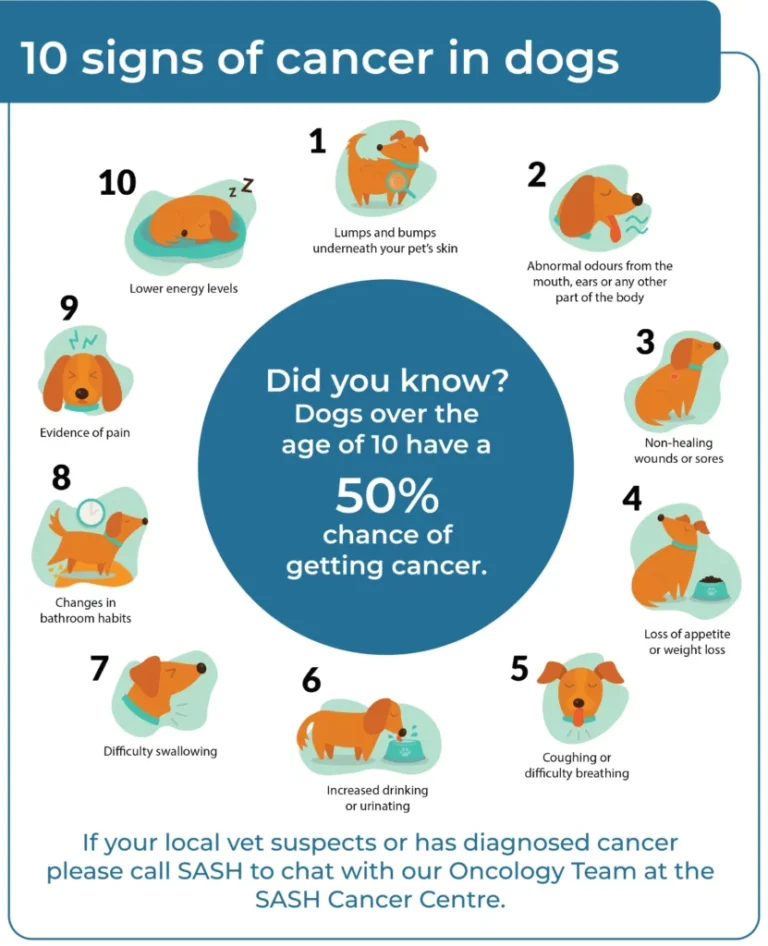
0 Comments